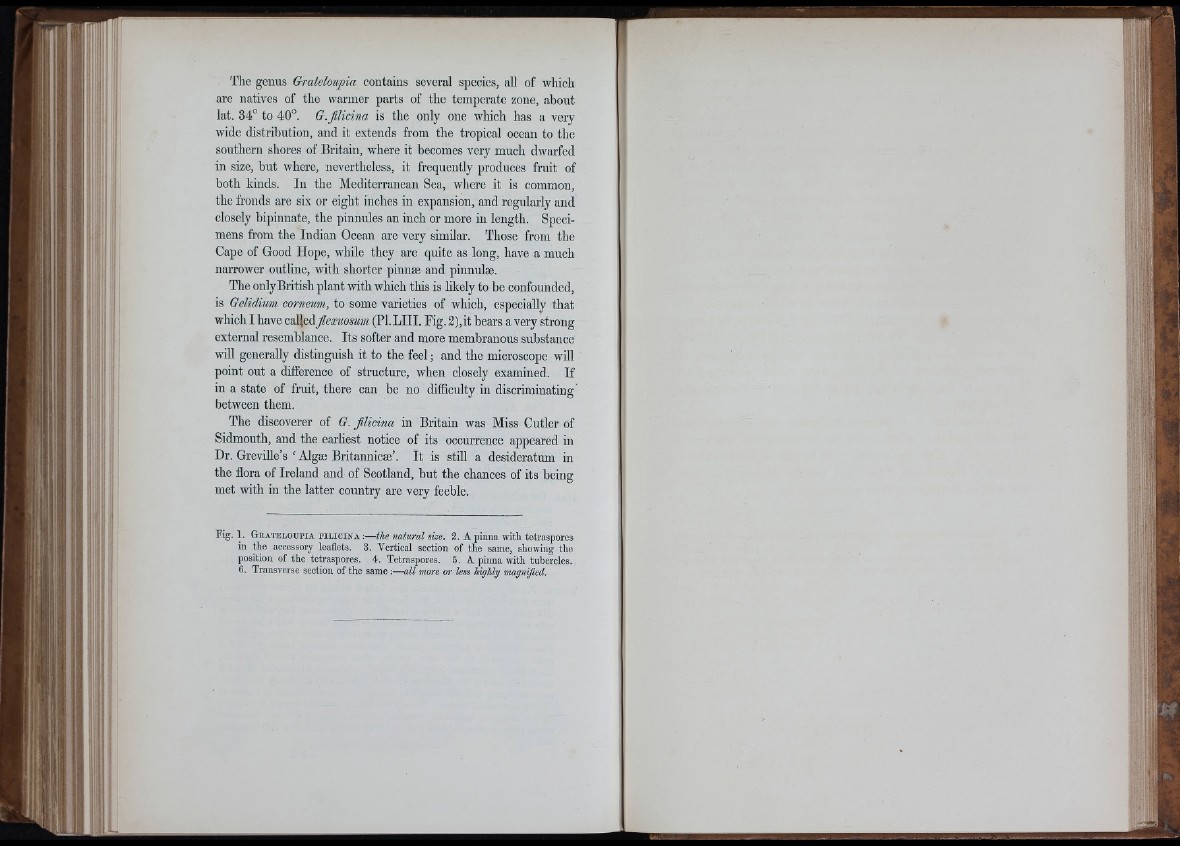
The genus Gratehupin contains several species, all of which
are natives of the warmer parts of the temperate zone, about
lat. 34° to 40°. G.filicina is the only one which has a very
wide distribution, and it extends from the tropical ocean to the
southern shores of Britain, where it becomes very much dwarfed
in size, but where, nevertheless, it frequently produces fruit of
both kinds. In the Mediterranean Sea, where it is common,
the fronds are six or eight inches in expansion, and regularly and
closely bipinnate, the pinnules an inch or more in length. Specimens
from the Indian Ocean are very similar. Those from the
Cape of Good Hope, while they are quite as long, have a much
narrower outline, with shorter pinnæ and pinnulæ.
The only British plant with which this is likely to be confounded,
is Gelidium corneum, to some varieties of which, especially that
which I have caljed fleæuosum (PI. LIII. Fig. 2),it bears a very strong
external resemblance. Its softer and more membranous suhstance
will generally distinguish it to the feel ; and the microscope will
point out a difference of structure, when closely examined. If
in a state of fruit, there can be no difficulty in discriminating
between them.
The discoverer of G. jUicina in Britain was Miss Cutler of
Sidmouth, and the earliest notice of its occurrence appeared in
Dr. Greville’s ‘Algæ Britannicæ’. It is still a desideratum in
the flora of Ireland and of Scotland, but the chances of its being
met with in the latter country are very feeble.
Fig. 1. Grateloupia filicina -.— the natural size. 3. A pinna with tetiaspoies
in the accessoiy leaflets. 3. Vertical section of the same, showing the
position of the tetraspores. 4. Tetraspores. 5. A pinna with tubercles.
6. Transverse section of the same :— all more or less / ’
-to